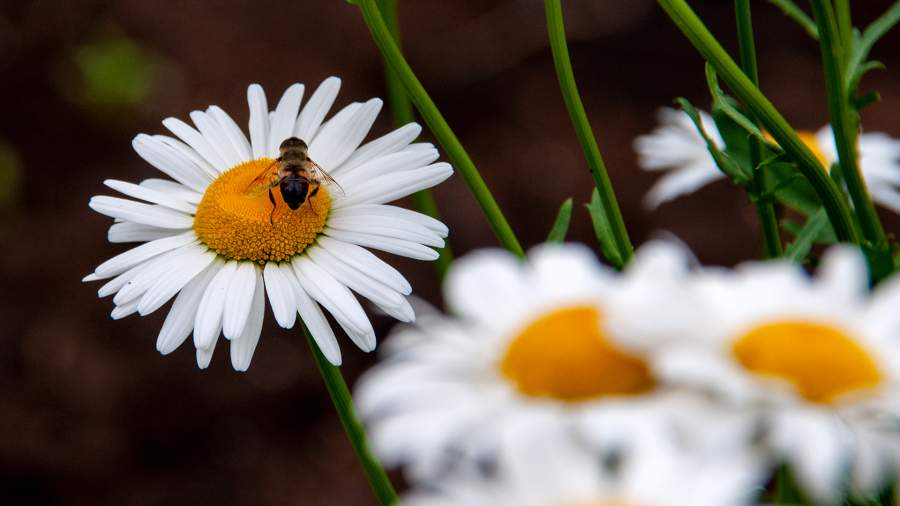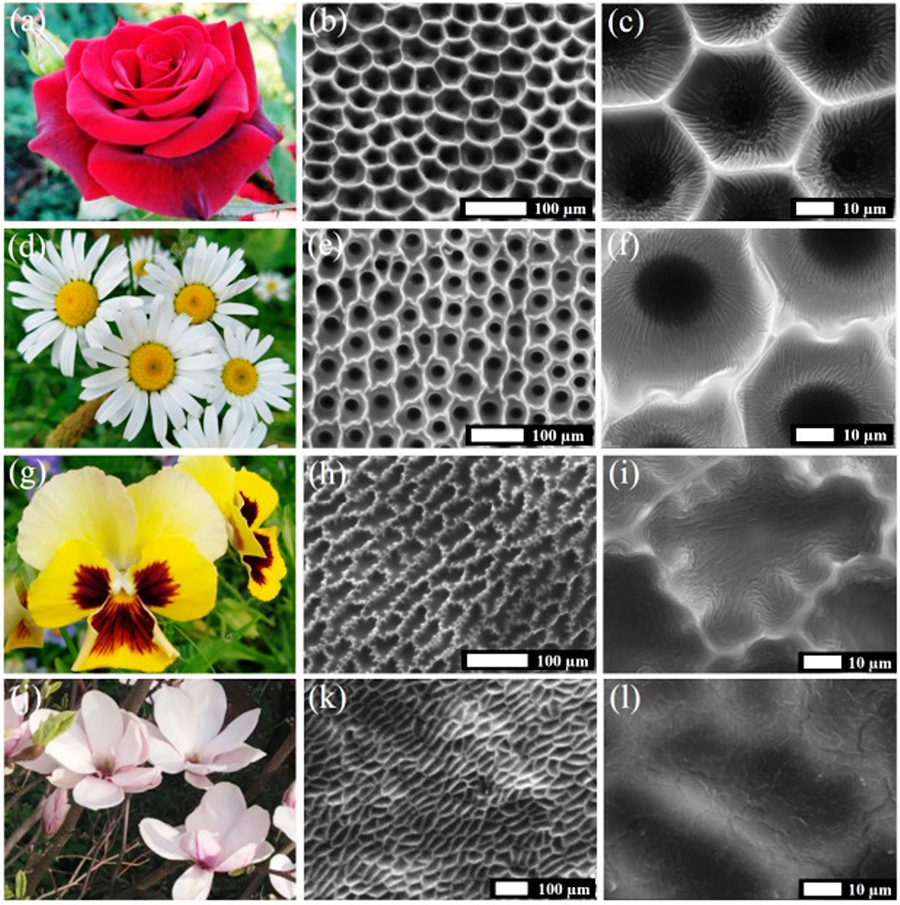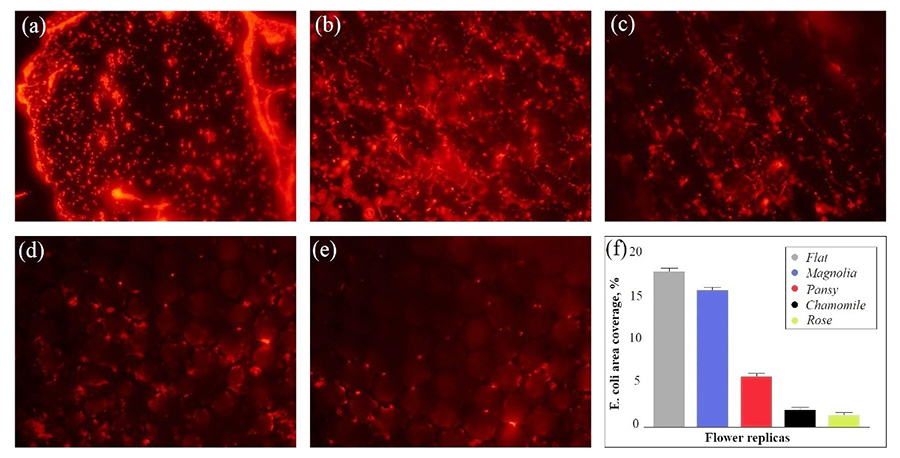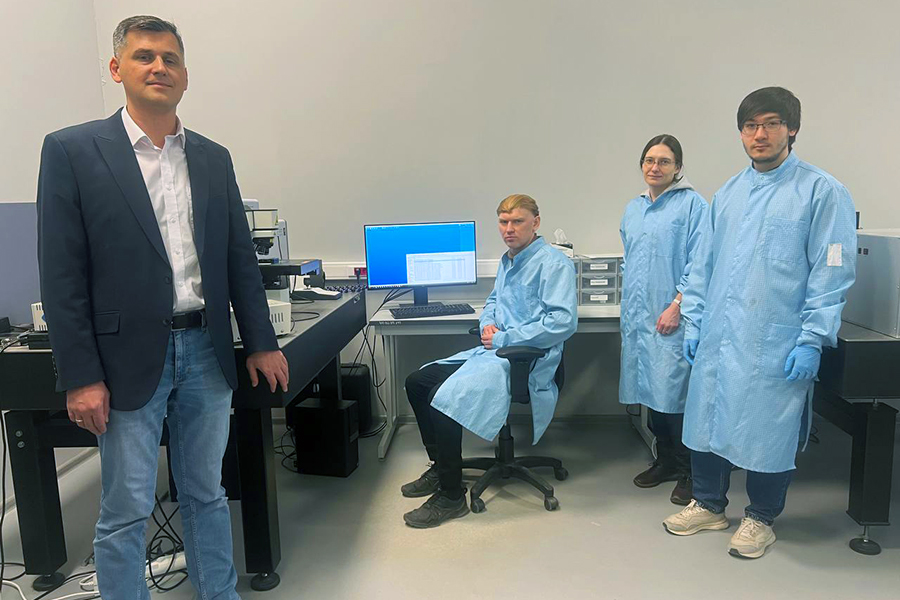Heal, petal: flowers will save the world from antibiotic-resistant bacteria
- Статьи
- Science and technology
- Heal, petal: flowers will save the world from antibiotic-resistant bacteria

Russian researchers have studied the relationship between the surface structure of flower petals and their resistance to colonization by microorganisms. They found out that applying a relief pattern to polymer materials that repeats the structure of the plant surface is an advanced and effective method of protection against microbes that does not require the use of antibiotics. Based on it, it will be possible to create coatings for household items and medical devices that will not require antimicrobial treatment. For more information about the technology, see the Izvestia article.
How flower petals fight bacteria
Due to their unique physico-chemical properties — flexibility, heat resistance, oxidation resistance and biocompatibility — polymers have found wide application. In particular, they are used to make medical products: catheters, contact lenses, prostheses and implants. At the same time, the polymer surface has characteristics that favor the attachment of bacteria to it, which can lead to infection of patients.
Traditionally, bacterial infections are combated with antibiotics, but the emergence of strains resistant to them requires the search for new ways to protect against colonization, that is, from colonization of surfaces by microorganisms. The MIPT researchers and their colleagues from TSTU and IBG UFIC RAS were inspired to solve the problem by flowers, more precisely, the structure of the petal surface.

In this paper, the scientists selected polydimethylsiloxane, a polymer known in everyday life as silicone, and four flowers for experiments: a rose, a chamomile, pansies and a magnolia. To make silicone copies of the petals, fragments of petals of living plants with an area of about 1 square cm were fixed in a Petri dish. They were then filled with a polydimethylsiloxane-based liquid and kept at room temperature for two days. After curing, the samples were carefully removed and rinsed with distilled water.
—We have carefully studied the relationship between the surface structure of flower petals and their resistance to colonization by microorganisms," Maria Barshutina, senior researcher at the Laboratory of Controlled Optical Nanostructures at MIPT, explained to Izvestia. — This allowed us to develop an algorithm for predicting the antibacterial properties of synthetic materials whose surface mimics plant tissues.
Defeat E. coli colonies
The obtained samples were studied using scanning electron microscopy, which makes it possible to obtain an image of the surface when an electron beam is reflected from it.
The antibacterial properties of six silicone copies of the petals and a flat substrate taken as a control sample were evaluated using the example of their colonization by E. coli. The samples were sterilized under an ultraviolet lamp for 30 minutes, then placed in a liquid culture medium designed for the cultivation of microorganisms, and incubated at 37 °C for 48 hours. After that, the samples were washed. E. coli was visualized under a microscope using a fluorescent protein acting as a dye, and the area of its spread was calculated.

According to the results, E. coli occupied 18% of the area on a flat substrate. The copies of chamomile and rose have the highest level of complexity and surface heterogeneity, while they have the most pronounced antibacterial properties, the developers of the method said.
Applying a relief pattern to polymer materials that repeats the structure of the plant surface is a promising method of protection against microbes that does not require the use of antibiotics, the scientists concluded. The main advantage is that it is easy to implement and easily scales to an industrial scale. The results obtained can be used for the production of polymer medical products with an antibacterial coating. Various household products can also be coated with such polymers.
Scientists are currently exploring the possibility of using "floral" coatings for biosensors.
Medical equipment with shark skin properties
This study is an example of the use of superhydrophobic surfaces, Evgeny Alexandrov, director of the NTI Center for Digital Materials Science: New Materials and Substances at Bauman Moscow State Technical University, told Izvestia.
— A moist environment is necessary for the reproduction of microorganisms. Due to the relief pattern, the wettability of the surface is reduced. Because of this, the contact area of the nutrient medium with the polymer is minimal, and the bacteria cannot multiply effectively. So, if the bacterium gets into the recess, it will not receive nutrition — the water does not enter the pore," the expert explained.

From a practical point of view, such drawings can be used on the surface of elements of public transport in contact with people, polyclinics, and so on, said Evgeny Alexandrov.
The use of this approach for medical purposes is not new. For example, shark skin and the wings of some insects (dragonflies and cicadas) also have antibacterial properties, Irina Timofeeva, senior lecturer at the ITMO Faculty of Environmental Technologies, told Izvestia. Recently, a startup offered to produce phone cases with an antibacterial "shark" coating.

— A similar approach is also applicable in the energy sector. Scientists from the University of California and their colleagues from the Karlsruhe Institute of Technology studied the wings of a species of sailfish (Pachliopta aristolochiae). They said that this butterfly inspired them to create the light-absorbing architecture of the top layer of the photovoltaic panel. The structure of the scales ensures the absorption of sunlight in a wide range of angles of incidence and wavelengths, the holes help to disperse light and absorb heat for the butterfly. Engineers have created a similar structure using a thin film," the expert noted.
The work was performed at MIPT, TSTU and IBG UFIC RAS with the financial support of the Russian Science Foundation. The results are published in the journal Polymers.
Переведено сервисом «Яндекс Переводчик»
